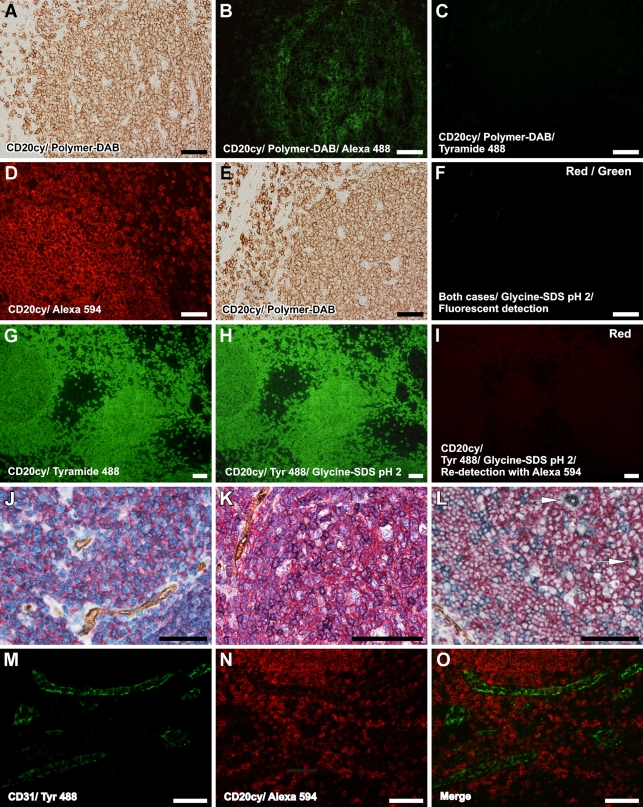Figure 2.
Efficiency of the proposed elution method and enzymatic- and fluorescent-based applications. After a classical detection procedure with a precipitation reporter system (A), the primary antibody can be still redetected with species-specific fluorescent secondary (B) but not with a tyramide-based system (C). After a fluorescent detection with a species-specific fluorescent secondary (D) or with an enzymatic procedure (E), applying the elution method and trying to redetect the signal shows a complete loss of primary antibody and fluorescent-labeled secondary, respectively (F). On the other hand, a tyramide-based green fluorescent detection (G) is not affected by the elution buffer (H), but the primary antibodies that linked the tyramide reporter are also eluted and cannot be redetected with a species-specific red fluorescent secondary (I). Eluting the antibodies does not disrupt tissue antigenicity. One, two, and three elution steps are used to perform double, triple, and quadruple immunolabelings. Ms CD31/Polymer-HRP/DAB, Ms CD20cy/Polymer-AP/Fast Red (J); Ms CD31/Polymer-HRP/DAB, Ms CD20cy/Polymer-AP/Fast Red, Ms CD45Ro/Polymer-HRP/Vector VIP (K); Ms CD31/Polymer-HRP/DAB, Ms CD20cy/Polymer-AP/Fast Red, Ms CD45Ro/Polymer-AP/NBT, Ms CD68/Polymer-HRP/Co enhanced DAB (L); Ms CD31/tyramide Alexa 488 (M) combined with Ms CD20cy/Alexa 594 (N) in O. For J and K, the slides have been counterstained with hematoxylin. Arrows in L represent macrophages. Bar = 50 μm.

